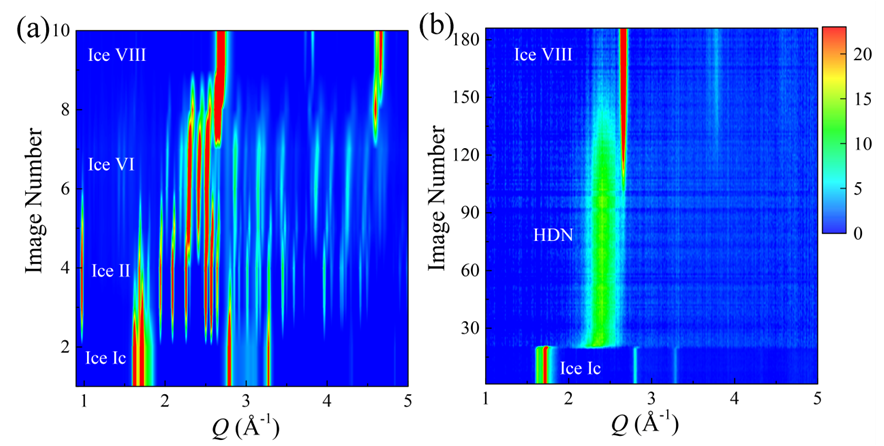Access into water's no man's land: discover high/low-density noncrystalline water -Dr. Chuanlong Lin
NOVEMBER 30, 2018
Exploration of the noncrystalline H2O (namely, liquid water and glassy ice) and polyamorphous transition in so-called water’s no man’s land (~150 K-232 K), have been hindered by the thermodynamically driven crystalline-crystalline transitions and rapid crystallization. Dr. Chuanlong Lin and colleagues overcome this challenge by using a newly developed technique of rapid loading (unloading) integrated with fast synchrotron x-ray diffraction measurements. They have discovered the high-density noncrystalline water and the transformation to low-density liquid water. The work is published on recent Physical Review Letters.
Water is probably the most investigated, and most important liquid for life. Yet major questions remain, leaving water a case of “the least known liquid” with a number of (67 known) strange properties. For example, ice is less dense than its liquid form, which is why ice floats on liquid water.
To understand water’s anomalous behavior, several scenarios have been proposed from theoretical simulations. Among them, a two-liquid model, with a high-density liquid (HDL) and a low-density liquid (LDL) below so-called water’s second critical point (~220 K), become more and more popular. However, the hypothesized HDL, LDL and the second critical point lie in water’s “no man’s land” between homogeneous nucleation temperature of liquid water (TH, ~232 K) and the crystallization temperature of glassy ice (TX, ~150 K). The success of exploring the noncrystalline water in this region has been limited thus far, despite various attempts made to probe supercooled water either by rapidly supercooling bulk water below TH or by heating glassy ice above TX.

Scientists from HPSTAR and HPCAT overcame this experimental challenge by using the newly developed rapid compression/decompression technique along with time-resolved synchrotron x-ray diffraction to access water’s mysterious phases in no man’s land. They observed a high-density noncrystalline form, which transformed to the theoretically predicted low-density liquid water.
In water’s no man’s land, crystalline ice I phase transforms to crystalline ice II phase under static compression, but it transforms to high-density noncrystalline (HDN) form under rapid compression, followed by a transition to ice VIII. With aid of rapid decompression, the crystallization behavior from the noncrystalline forms (liquid water, or glassy ice) can be suppressed. This leads to two way transformation between low-density and high-density noncrystalline states.
“Rapid (de)compression is the key technique to make high/low-density noncrystalline (liquid or glassy) water, and time-resolved fast probing technique is able to allowus to observe these intermediate states at short time scale”, said Dr. Lin.
Rapid loading (unloading) can help us synthesize new metastable phases. But, its application on other materials is largely unexplored. “Just as metallic melts fail to crystalline with rapid cooling rate, they form glassy metals. We believe that fast loading (unloading) technique will also help us find more metastable phases in other materials, including amorphous materials”, added Dr. Wenge Yang.
Caption: Slow compression of water at 164 K leads to crystalline-crystalline transition (a); rapid compression leads to the formation of high-density noncrystalline phase.
为了解释水的异常行为,理论研究者提出了多种模型。其中“两种液态模型(two-liquid model)”在理论模拟中越来越受支持。该模型提出在过冷区域的一个临界点以下存在着高密度水和低密度水,该临界点称为水的第二临界点。然而,理论计算中预测的低密度水和高密度水一直没有得到实验证实,这是因为高密水和低密度水存在于被称为水的“无人区”(~150 K<T<232 K)的区域中。在此区域中,无序相(包括液态水和玻璃态非晶冰)都很快晶化,因此很难被实验观察到。在北京高压科学研究中心的林传龙和杨文革研究员负责的一项研究中,利用快速加(卸)载技术结合快速原位的时间分辨X射线衍射技术成功进入了水的无人区,在此区域发现了高密度非晶态水。
